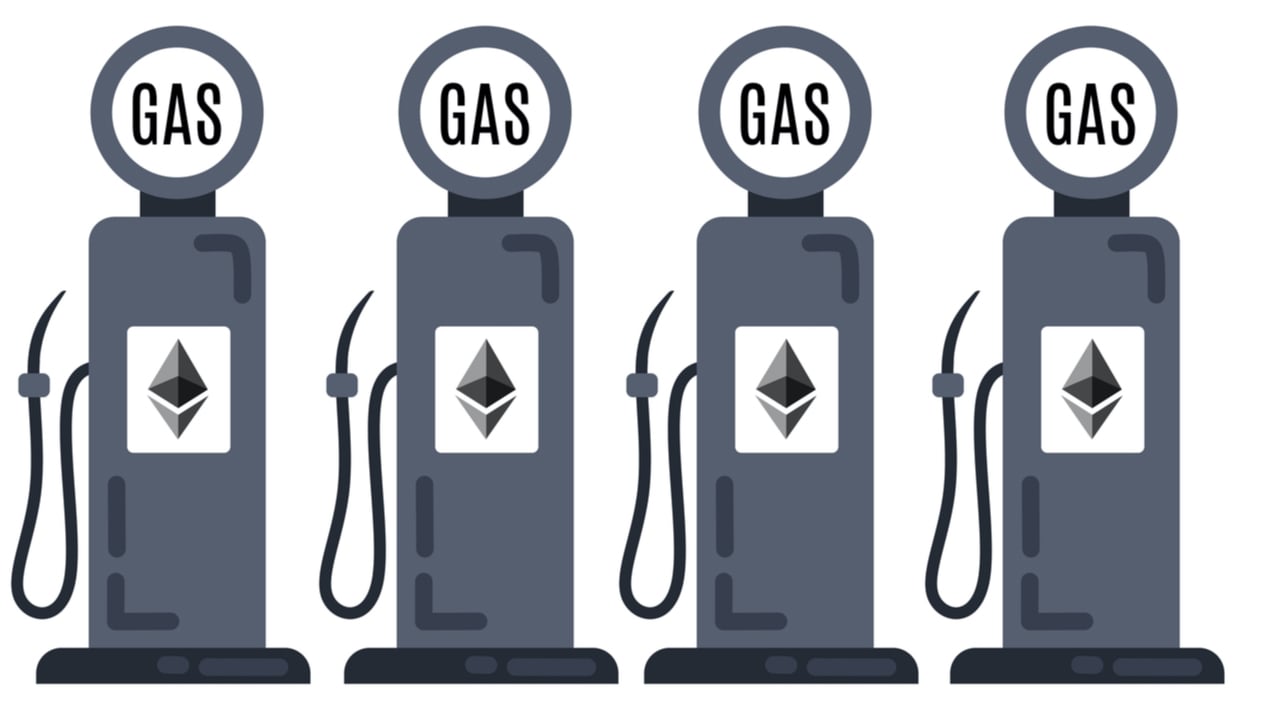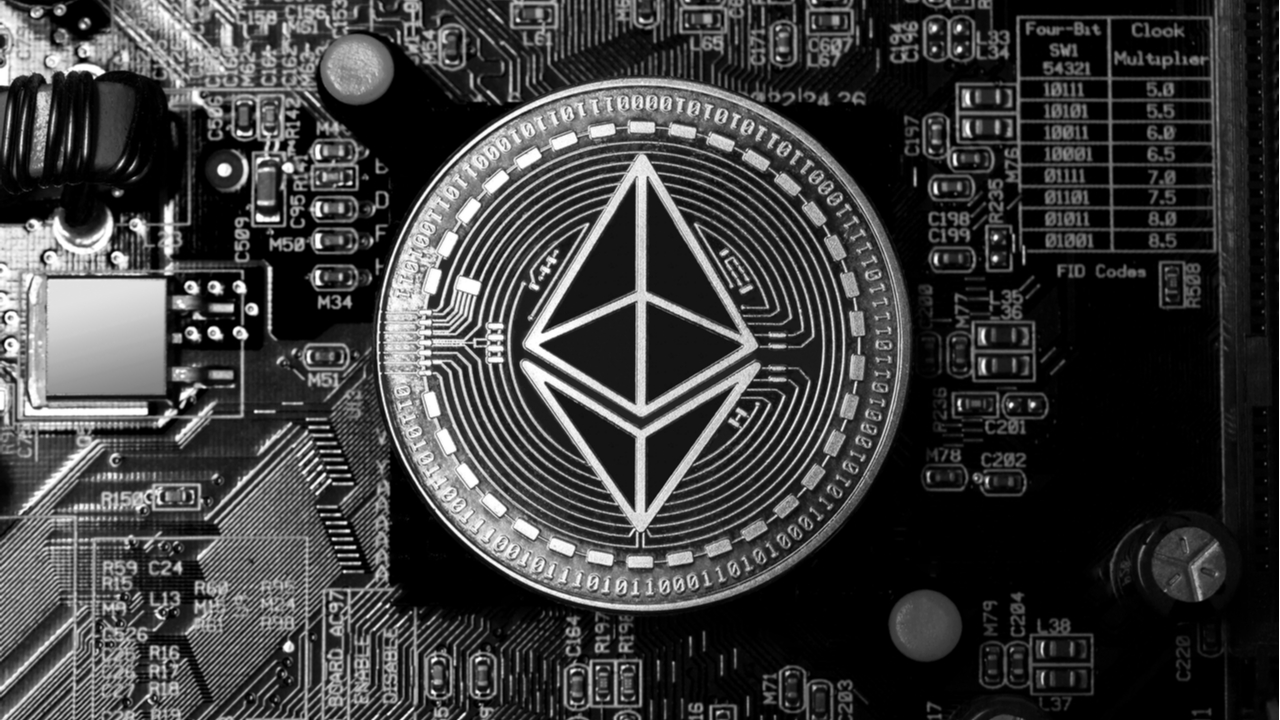 With three days left until the end of 2021, the Ethereum network and its native token ether have had a phenomenal year as ether has increased more than 450% in value in 12 months. 145 days ago, on August 5, the Ethereum network implemented the London hard fork and since that day, 1,283,226 ether worth […]
With three days left until the end of 2021, the Ethereum network and its native token ether have had a phenomenal year as ether has increased more than 450% in value in 12 months. 145 days ago, on August 5, the Ethereum network implemented the London hard fork and since that day, 1,283,226 ether worth […] Since November 9, 2021, or 46 days ago, transaction fees on the Ethereum network have been cut by more than half the rate they were on that day. At the time, the average fee to move ethereum was $62.84 per transfer and since then, the fees have dropped 62.85% to $23.34 per transaction. From $62 […]
Since November 9, 2021, or 46 days ago, transaction fees on the Ethereum network have been cut by more than half the rate they were on that day. At the time, the average fee to move ethereum was $62.84 per transfer and since then, the fees have dropped 62.85% to $23.34 per transaction. From $62 […] On December 12, crypto advocates celebrated the fact that 90% of the 21 million bitcoins that will ever exist have been mined into circulation. Currently, Bitcoin’s inflation rate per annum is around 1.88%, which is lower than the central banks’ traditional 2% target reference. Furthermore, in 875 days, the network’s inflation rate is expected to […]
On December 12, crypto advocates celebrated the fact that 90% of the 21 million bitcoins that will ever exist have been mined into circulation. Currently, Bitcoin’s inflation rate per annum is around 1.88%, which is lower than the central banks’ traditional 2% target reference. Furthermore, in 875 days, the network’s inflation rate is expected to […] The central bank of Russia intends to ensure that the digital ruble is convertible to foreign currencies and can be used by non-residents. In a document devoted to the digitalization of the Russian financial sector, the regulator reiterates its concerns over the risks associated with cryptocurrencies and insists that state-issued digital currencies are safer. Bank […]
The central bank of Russia intends to ensure that the digital ruble is convertible to foreign currencies and can be used by non-residents. In a document devoted to the digitalization of the Russian financial sector, the regulator reiterates its concerns over the risks associated with cryptocurrencies and insists that state-issued digital currencies are safer. Bank […]
Florida Governor Ron DeSantis proposed to allocate $750 million to enable a “crypto-friendly Florida.”
Florida Governor Ron DeSantis has officially proposed the state government to allow businesses to pay state fees with cryptocurrencies like Bitcoin (BTC).
The Republican governor announced the idea as part of his 2022–2023 budget proposal, released on Dec. 9.
According to the official budget highlights, DeSantis proposed to provide $200,000 to the Department of Financial Services to offer Florida corporations the ability to “pay state fees via cryptocurrency directly to the Department of State.”
“Florida encourages cryptocurrency as a means of commerce and furthering Florida’s attractiveness to businesses and economic growth,” the document reads.
DeSantis additionally proposed allocating another $500,000 to explore the potential of blockchain technology to maintain motor vehicle records as well as authenticate Medicaid transactions and detect potential fraud.
The overall $700,000 proposal is dedicated to enable a crypto-friendly Florida, the budget proposal reads.
Florida has been steadily emerging as a major cryptocurrency-friendly jurisdiction in the United States as one of its major cities, Miami, is being actively promoted as the “world's Bitcoin and crypto capital.”
Related: Navigating CityCoins: Miami citizens to earn Bitcoin despite the city not holding crypto
Last month, Miami Mayor Francis Suarez announced that he aimed to be the first U.S. lawmaker to accept part of his paycheck in Bitcoin. The official reportedly owns both BTC and Ether (ETH).
In September, Miami’s city commissioners voted to accept funds generated by the new MiamiCoin cryptocurrency, which was launched by the smart contracts protocol CityCoins in August. Having generated more than $21 million in yields as of mid-November, MiamiCoin will be available to all Miami residents in the form of a Bitcoin dividend, according to the city mayor.
 A recent paper authored by members of several universities, including Sydney and Macquarie, argues that recent changes in Ethereum monetary policy are making it a better store of value than bitcoin. The deflationary effect that the EIP-1559 proposal has caused in the issuance of the currency is said to be the main cause of this. […]
A recent paper authored by members of several universities, including Sydney and Macquarie, argues that recent changes in Ethereum monetary policy are making it a better store of value than bitcoin. The deflationary effect that the EIP-1559 proposal has caused in the issuance of the currency is said to be the main cause of this. […]
Strong fundamentals and the steady growth of the Polygon network are just a few of the factors behind MATIC’s recent rally above $2.00.
Layer-two (L2) solutions for the Ethereum network have become a popular topic of discussion and speculation on their associated tokens backed the massive rally seen in many of the protocols this year. The parabolic growth of the decentralized finance (DeFi) and nonfungible token (NFT) sectors also led to a surge in the cost of carrying out simple transfers and this prompted developers and investors to migrate to L2-supportive platforms.
One L2 solution that saw its token price rise to new highs earlier in the year and now looks poised to make another breakout higher is Polygon (MATIC), a proof-of-stake blockchain protocol that aggregates scalable solutions on Ethereum to support a multi-chain ecosystem.
Data from Cointelegraph Markets Pro and TradingView shows that MATIC hit a low at $1.01 on Sept. 21, and over the past few months, the price has been in a steady uptrend, bringing the altcoin above the $2 mark on Dec. 1.

Polygon's ecosystem is expanding and proof of this can be seen in the increase in protocol launches, cross-chain migrations, the launch of a Polygon-focused exchange-traded product (ETP) and a steady uptick in user activity.
One of the biggest drivers of MATIC price and on-chain activity has been the addition of new protocols to the Polygon network throproject launches and cross-chain migrations.
Most recently, IDEX decentralized exchange announced that it would launching v3 of its exchange on the Polygon network, making it the first hybrid liquidity DEX on Polygon.
Tomorrow. Approximately 12 PM PST.
— IDEX (@idexio) November 30, 2021
IDEX v3, the first Hybrid Liquidity DEX will be launching on @0xPolygon.
✅ Combined AMM + Order Book Liquidity
✅ Trading Rewards + Liquidity Mining
✅ No failed transactions
✅ Real limit & stop-loss orders
✅ Cheap transaction fees pic.twitter.com/1nmOEzEGLW
The Polygon network has seen project launches from NFT projects like the OpenBiSea NFT marketplace and gaming/DeFi platforms like Rainmaker Games, Harvest Finance and Jarvis Network.
Currently, the Uniswap community is in the process of voting on whether to add Polygon support for Uniswap v3 and after a majority yes Phase 1 vote on Nov. 25, the process has shifted into Phase 2.
Another reason for the bullish price action for Polygon has been increased interest from institutional investors. Several exchange-traded products (ETPs) for Polygon have been listed in recent months, including the Osprey Polygon Trust in September and the 21Shares Polygon ETP in November.
Polygon is also included on the list of assets being explored by the Grayscale Investments as a potential Trust candidate.
The network has also benefited from a $20 million investment fund launched by Wintermute, a digital asset market maker focused on helping to bootstrap the development of decentralized applications on Polygon.
Currently, the Polygon network is receiving increased attention as it prepares to host a ZK Summit on Dec. 9 where developers will discuss the “current state and future of zk-STARKs and applications of zero-knowledge proofs.”
Related: IDEX to launch hybrid liquidity decentralized exchange on Polygon
A third reason for the bullish price action seen in MATIC has been the steady increase of users on the network as evidenced by the increase in wallet addresses holding a balance.

As shown in the graph above, the number of Polygon wallets holding a balance has steadily increased throughout 2021 and is currently at an all-time high of 282,760.
Evidence of the increased activity can also be found in the data for total revenue generated from fees on the network, which has been steadily increasing over the second half of 2021.

As new protocols continue to list on the Polygon network, these stats are likely to rise if new users continue to use the platform to escape the high fees seen on the Ethereum network.
VORTECS™ data from Cointelegraph Markets Pro began to detect a bullish outlook for MATIC on Oct. 15, prior to the recent price rise.
The VORTECS™ Score, exclusive to Cointelegraph, is an algorithmic comparison of historical and current market conditions derived from a combination of data points including market sentiment, trading volume, recent price movements and Twitter activity.

As seen in the chart above, the VORTECS™ Score for MATIC spiked into the green zone on Oct. 15 and reached a high of 94 around 48 hours before the price began to increase by 57% over the next six weeks.
The views and opinions expressed here are solely those of the author and do not necessarily reflect the views of Cointelegraph.com. Every investment and trading move involves risk, you should conduct your own research when making a decision.

Bitcoin’s settlement efficiency has been improving which means more value can be sent for lower transaction fees.
The Bitcoin network’s value settlement efficiency has been improving steadily recently, with more being settled for lower fees.
Over the past week, the Bitcoin network has transferred or settled an average of $95,142 of value for every $1 worth of fees.
The on-chain settlement efficiency has been gradually increasing since May as more has been moved around the network during the bull cycle.
On-chain analyst Dylan LeClair made the observation using data from analytics provider Glassnode. The value is derived by dividing the mean transaction volume by the fees.
Over the last seven days the #Bitcoin Network transferred an average $95,142 of value for every $1 worth of fees.
— Dylan LeClair (@DylanLeClair_) November 29, 2021
The median transaction saw $751 of value transferred for every $1 worth of fees.#Bitcoin is the most efficient monetary settlement network the world has ever seen. pic.twitter.com/DzSwxCDKkd
The final settlement costs amounted to just 0.00105% of the total value transferred of $451.3 billion.
According to CryptoFees, Bitcoin is seventh in the list of networks ordered by daily transaction fees. Its seven-day average is around $678,000 which puts it behind Ethereum, Uniswap, Binance Smart Chain, SushiSwap, Aave, and Compound.
The fee tracking platform currently reports that Ethereum is currently processing $53 million in daily fees, 98.7% more than the Bitcoin network. Bitcoin and Ethereum should not be compared in terms of value settlement and fees as they are two different entities — the former is a store of value asset and the latter a smart contract and decentralized application network.
Ethereum’s mean transaction volume divided by the fees comes out at just $139 in value transacted per dollar in fees.
The settlement efficiency of the Ethereum network has declined as more value has accrued to the network and a much greater demand has been put on it, especially with the rise of DeFi and NFTs over the past 18 months.
Related: Bitcoin network tags record high for daily settlement volume
According to Bitinforcharts, the average transaction fee on the Bitcoin network is around $2.13 at the moment. Comparatively, the Ethereum network’s average fee is a whopping $42.58. As reported by Cointelegraph yesterday, Bitcoin transaction fees are down by more than 50% this year.
The divergence in average transaction fees between the two networks can be seen widening from the end of July.

Ethereum’s network fee woes can be circumvented by using layer two networks which have surged in adoption over the past couple of months with a near all-time high total value locked of $6.87 billion according to L2beat.
 One of the largest cryptocurrency mixing protocols, Tornado.cash, has announced the project will deploy on the L2 (layer 2) Ethereum platform Arbitrum One. The creators of the Ethereum-based mixing application explain that settling on Arbitrum will allow Tornado.cash users to benefit from cheaper transactions. Tornado.cash to Deploy on Arbitrum – ‘Cheaper Transactions Being the Biggest […]
One of the largest cryptocurrency mixing protocols, Tornado.cash, has announced the project will deploy on the L2 (layer 2) Ethereum platform Arbitrum One. The creators of the Ethereum-based mixing application explain that settling on Arbitrum will allow Tornado.cash users to benefit from cheaper transactions. Tornado.cash to Deploy on Arbitrum – ‘Cheaper Transactions Being the Biggest […]
Buterin issued a decrease-cost-and-cap proposal, which aims to achieve most of the benefits of the decrease
Ethereum (ETH) co-founder Vitalik Buterin has proposed a new limit on the total transaction calldata in a block to decrease the overall transaction calldata gas cost over the ETH network.
Buterin’s post on the Ethereum Magicians forum, EIP-4488, highlights concerns regarding high transaction fees on Layer-1 blockchains for rollups and the considerable amount of time to implement and deploy data sharding:
“Hence, a short-term solution to further cut costs for rollups, and to incentivize an ecosystem-wide transition to a rollup-centric Ethereum, is desired.”
While the entrepreneur cited an alternative wherein the gas costs parameters could be decreased without further adding a limit to the block size, he foresees a security concern in decreasing the calldata gas cost from 16 to 3:
“[This] would increase the maximum block size to 10M bytes and push the Ethereum p2p networking layer to unprecedented levels of strain and risk breaking the network.”
Some think layer 2 fees on ETH are too high, because each byte of data a rollup uses cost 16 gas. To lower fees, the gas cost could be reduced to 3. This should be a large benefit, with 5x lower fees. However, in the long term, this may mean blocksize is a new network constraint pic.twitter.com/ffbTQ4zXOz
— BitMEX Research (@BitMEXResearch) November 26, 2021
Buterin issued a decrease-cost-and-cap proposal, which aims to achieve most of the benefits of the decrease, and believes that “1.5 MB will be sufficient while preventing most of the security risk.” As an advice to the Ethereum community, he wrote:
“It's worth rethinking the historical opposition to multi-dimensional resource limits and considering them as a pragmatic way to simultaneously achieve moderate scalability gains while retaining security.”
If accepted, the implementation of the proposal will require a scheduled network upgrade, resulting in a backward-incompatible gas repricing for the Ethereum ecosystem. This upgrade will also mean that miners will have to comply with a new rule that prevents the addition of new transactions into a block when the total calldata size reaches the maximum. “A worst-case scenario would be a theoretical long-run maximum of ~1,262,861 bytes per 12 sec slot, or ~3.0 TB per year,” the proposal read.
However, the community is discussing other options like the implementation of a soft limit. Others raised concerns about the congestion during nonfungible token (NFT) sales, which may require users to compensate for the lack of execution gas by paying a higher total fee.
Related: Layer-two and multichain DeFi platforms see record inflows as Ethereum fees soar
Rising gas fees have resulted in an outflow of users from the Ethereum network to lower-cost Ethereum Virtual Machine-compatible networks.
As Cointelegraph reported on Nov. 04, Etherscan data shows that approving a token to be transacted on Uniswap decentralized finance protocol can cost as much as $50 worth in ETH.

Additionally, Layer-two solutions, which were billed as the protocols that would help solve the fee issue, have been charging high fees due to network congestion amid the onboarding of new users.
isnt arbitrum supposed to be cheap lol what a joke pic.twitter.com/v839tZ4nch
— satsdart (@satsdart) November 2, 2021